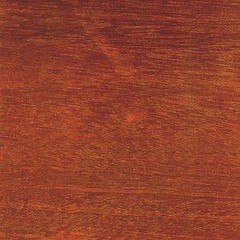What is Sapele Hardwood Flooring?
Botanical Name: Entandrophragma cyn.
Fast Facts
Color: Sapele has a medium to dark reddish brown color which will darken with time and exposure to UV light.
Grain: Sapele has a fine, interlocked grain.
Variations within Species and Grades: If the wood is quarter sawn, it has a ribbon stripped effect.
Hardness/Janka: With a rating of 1,500, sapele is about 16% harder than the traditional red oak.
Dimensional Stability: With a rating of 7.4, the dimensional stability of Sapele is considered above average. Sapele is about 14% more stable than red oak.
Sawing/Machining: Sapele saws easily.
Sanding: Though a certain sequence must be followed correctly to produce the right look, it can be sanded easily.
Nailing: There are no known problems with nailing sapele.
Finishing: If the wood is stained, it may darken the wood too much.
Availability: Sapele is moderately available.
A Brief History of Sapele
Sapele is a tree native to Africa. As a flooring choice, people look to it for the beautiful grain and durability. Other uses include guitar manufacturing for major brands such as Ibanez, Martin and Taylor. Carmaker Cadillac has used sapele for its wooden interior. It is sometimes used for the neck pieces of ukuleles. Sapele is much like mahogany. Sapele is also used in cabinetry and decorative molding.
Durability
Sapele is a durable wood. Though it is not the strongest and hardest wood on the scale, it is not among the softer wood choices. It must be properly cared for to remain in good condition because no matter how durable a floor is, it will succumb to wear and tear eventually. While it shares many characteristics with mahogany, sapele is more durable than true mahogany.
Workability
Sapele is easy to work with. It saws easily, and sands with ease so long as a particular sequence is followed. Nailing sapele is easy and there are no known problems with it. Finishing the wood is easy, though a clear finish is recommended because a dark stain may cause the floor to get too dark.
Where to Use
Sapele can be used in both residential and commercial settings where the color is desired.
Care and Maintenance
As with other wood floors, the finish on the wood determines how to properly care for and maintain it. Both an oil based and water based finish will work on sapele wood, so it is important to consider the cleaning and care when choosing a finish. The floor is durable enough to handle high traffic without showing too many early signs of wear and tear, but without proper care, the floor will show age before its time. Use mats by doors and non staining rugs in high traffic areas to protect the finish. It will help keep dirt and debris from the outdoors off the shoes that walk across the floor.
Environmental Issues
Since sapele is predominately found in Africa and is not native to the United States, there are decreasing supplies available as it is harvested frequently and imported.

william perkins
My question is the same as james gilliam, I am using sapelee for a kitchen counter top and would like to produce a deep natural finish using a product called Sikkens Cetol Marine light finish. What would be your recommendation for the sanding procedure?
Thank you
wm perkins
Ted Drake
I am making a box cabinet , 17″ wide X 17″ deep X 18″ high with a 5″ drawer inside top. What kind of joints would look good on this box? I am working in our village wood shop so I have access to good equipment also what is the best sanding sequence. I re-sawed 1″ boards and now have 3/8″ boards all around. Thank You very much. Ted
james gilliam
what is the sanding sequence for sapelee